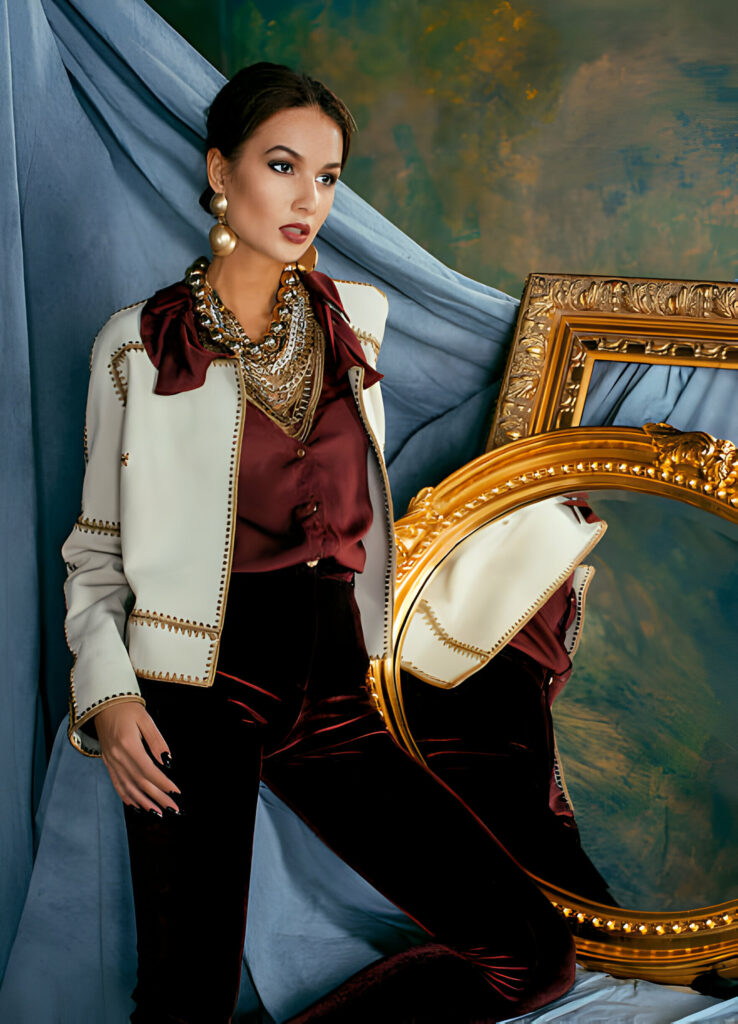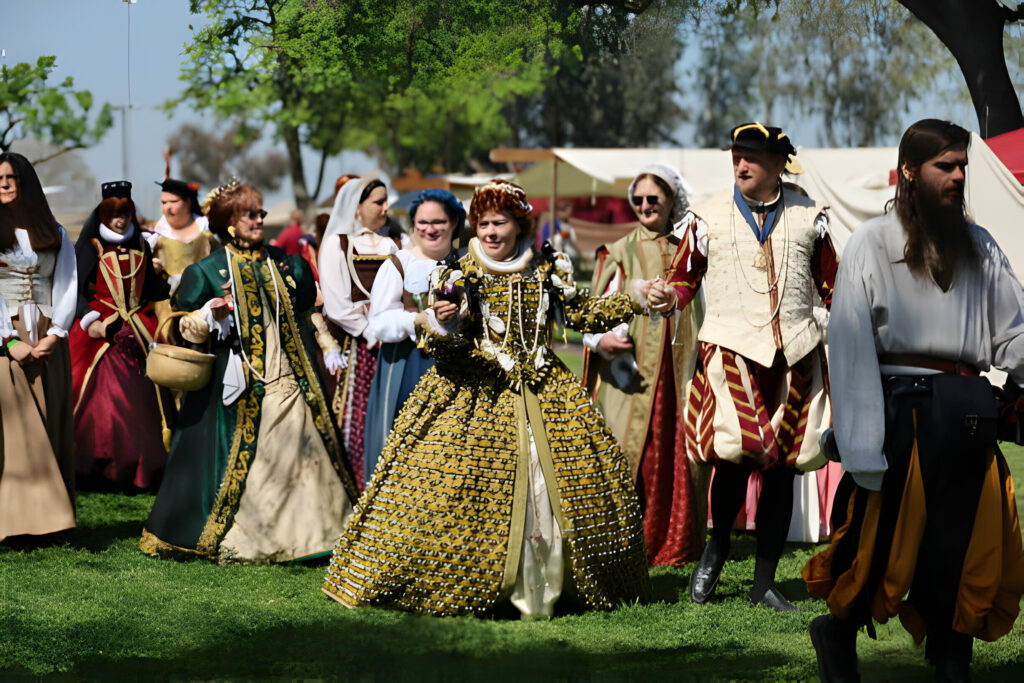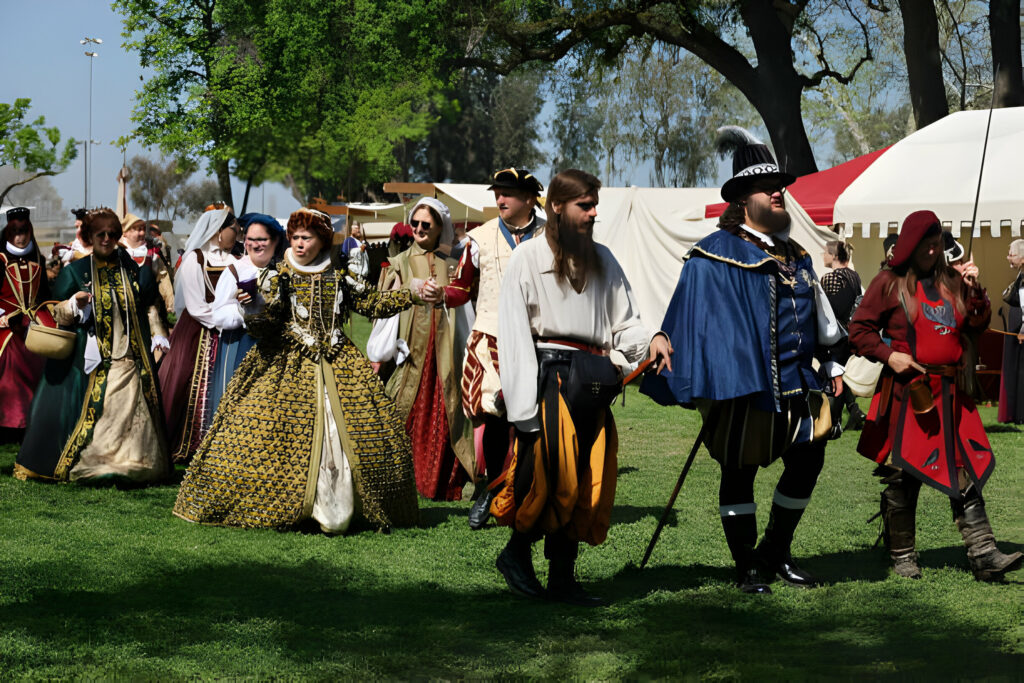
From plunging Renaissance velvets to intricate Victorian brocades, few elements bring a historical costume to life quite like luxurious period-appropriate fabrics. But what makes an Elizabethan silk “Elizabethan” or a Jacobean lace authentically “Jacobean”? In the world of historical attire, fabrics make the era so gaining fluency in deciphering elegant textiles proves invaluable inspiration for custom creations bursting with authentic ambience.
By necessity, fashion always remains deeply rooted in available materials and technologies. The fabrics adorning Grecian goddesses flowed from utterly different cloth-making capacities than the textiles draping Victorian ladies 1500 years on. To incorporate era-echoing essence into wearable art, a curatorial eye recognizes how finely certain textiles intertwine with their native time period. Let’s explore what meticulous material details evoke the allure of history to awaken any costume design.
Velvet, glorious crushable velvet, calls to mind Henry VIII clutching goblets of wine while appraising his next queen. The plush pile fabric began trending as the Renaissance reached peak decadence thanks to 16th century loom innovations allowing thicker woven foundations. While silk velvet remains the gold standard, more affordable linen and wool options eventually became accessible for merchant and tradesmen classes as well.

When channeling medieval or Renaissance faires, stay attuned to velvet’s intricate past. Designers should seek textural depth from substantial devoré-velvets or opulent voided techniques where artisans cut away background fibers to yield lush patterned reliefs. Does the crushed surface catch the light along intricately cut motifs in traditional vine or paisley shapes? Pass a hand across – with quality velvet the plush texture creates kinetic dimension that cheaper synthetic pile cannot replicate. Authenticity hides in quality details.
Brockade offers another period showstopper where luxury exudes from every shimmering metallic thread. The luminous silk fabric came into vogue during 18th-century Rococo frills when young French nobles had money to burn before revolution would demand their heads not far thereafter! Intricately patterned floral shapes emerge from dense low-relief designs rather than floating atop like embroidery. Such labor-intensive production requires great skill specialized to various European textile epicenters over history.
When sourcing brocade for an aristocratic French gown, opt for silk interwoven with fine metallic threads in dynamic yet refined patterns with floral whimsy or dynamic zig-zags. Rococo motifs should read light and delicate, avoiding any heavyweight stiff appearance of upholstery. On the other hand, lush 19th-century brocades suit overall decadence prime for second empire gowns dripping in indulgence. Study the period, study the pattern language. Granularity matters greatly for channeling any era effectively through dress!

Speaking of granular details, few fabric flourished more surrounding Marie Antoinette than arguably the most iconic lace of all – Chantilly, that frothy silk netting hand-embroidered with untold patience by candlelight. Look closely and the extricate floral vines and botanical sprays materialize in a subtle monochromatic effect thanks to the great skill involved.
While metallic embroidery and thread-woven brocades visually read “decadent”, needlework laces convey status through labor alone. Handmade lace requires no expensive materials, only specialized talent transforming humble thread into priceless airy artistry. European regions developed distinctive styles over centuries– Flemish bobbin lace, Irish crochet, gossamer Belgian lace each carry legacies linking generations of artisan hands.
When sourcing historical lace either to incorporate into bespoke designs or for clients wishing to provide distinctive family heirlooms, opt for qualitative traits expressing handcrafted refinement over machine copies. Variations in thickness and deliberateness of the motif shapes express a human touch. Check edges for inconsistencies over laser-cut perfection. Flowing asymmetrical vine patterns scattered with irregularities read effortlessly elegant compared to manufactured precision likely unable to capture the movement and dimension of true handiwork passed down through generations.
The world of historical fashion welcomes dreamers, so never self-limit creativity over notions of accessibility. Part of the magic flowing from antiquity means sometimes seeking far-flung textiles echoing ghostly hands of times past. Study memoirs, paintings and film costuming alike. Read between those lines to uncover how European silk spoke in coded ways about noble status as clearly as Chinese porcelain signifying worldly exoticism. Follow these clues and soon you’ll discover a whole secret language awaiting deciphering!